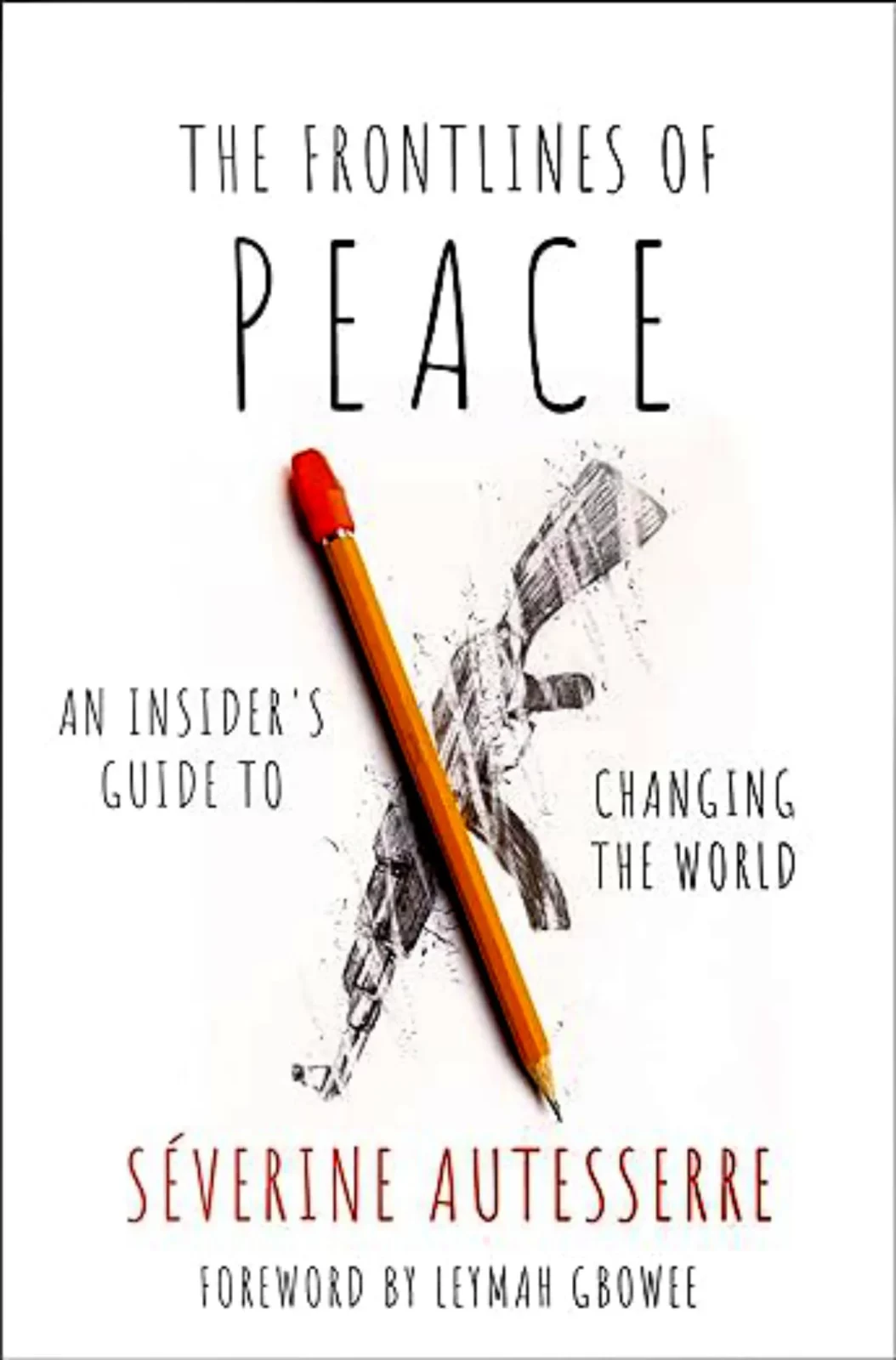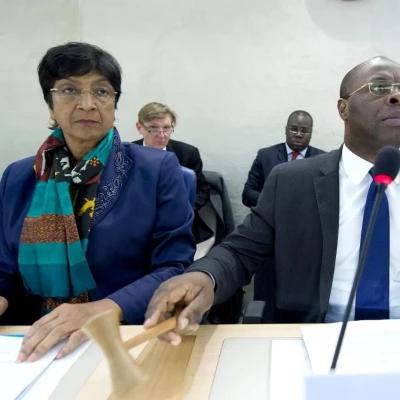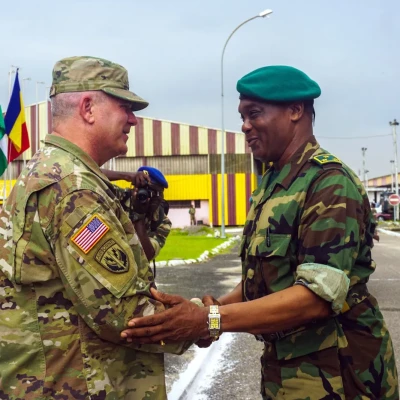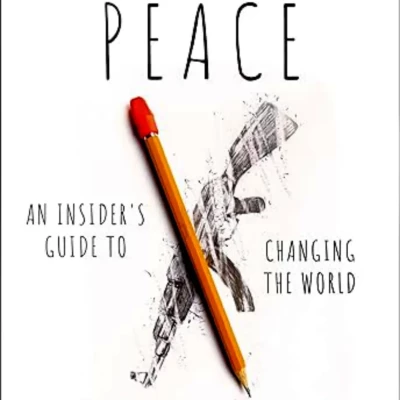In a world marked by discord and turmoil, the peace pursuit is an enduring aspiration. The concept of peace transcended the absence of conflict, embracing a multifaceted journey of trust-building and addressing the cause of conflict. This change in outlook calls for a reassessment of peace initiatives in the many ongoing wars worldwide, such as those in Palestine, Ukraine and Sudan. Regarding Palestine, the Israeli-Palestinian conflict has endured for many years, avoiding conventional methods for achieving peace. To bring about a permanent peace, efforts must go beyond short-term truces and address the underlying historical, political, and socioeconomic problems. The legacy of the violence in Darfur and South Sudan’s secession poses severe issues for Sudan.In this situation, a new strategy for achieving peace must address problems with national identity, self-determination, and outside intervention. The Frontlines of Peace: An Insider’s Guide to Changing the World, by Séverine Autesserre, is a welcome addition to peacebuilding as it provides an insider’s perspective on the challenges and opportunities faced by people working in conflict zones.
The book’s main argument is captured in the statement, “Many effective grassroots organisations also help maintain peace. When there is a conflict that individuals or families cannot be resolved by themselves instead of calling the police, people reach out to religious networks, elders and women groups” (Autesserre, p. 37). This emphasises the importance of the bottom-up initiative and the crucial role of local actors in peacebuilding, challenging the narratives that focus on high-level negotiations and foreign intervention.
Part one of the book focuses on rethinking peacebuilding, where the conventional approaches are highlighted alongside the limitation of top-down interventions. Autesserre implies that sustainable peace can be attained by empowering local communities. This means there is a need to understand the root cause of conflicts and emphasize the need to shift attention from war zones to lesser-known areas where peace is actively built. According to Autesserre, external actors’ top-down approach commonly results in merely suppressing conflict and never lasting peace. This presents an alternative approach: the bottom-up method. The book highlights that peacebuilding should focus on giving voice to local communities and grassroots organisations. Therefore, a more permanent peace could be reached by listening to communities’ experiences, needs, and aspirations. Many peacebuilders offer prefabricated remedies that they think work anywhere. In this regard, Autesserre contests the idea and underlines the fact that there is a need for customised solutions. In her argument, she states how something that may work in a single situation of a conflict-affected area might not work in another. Therefore, peacebuilding approaches need to be culturally sensitive and based on the needs and situations of each community. Autesserre furthermore draws attention to the weaknesses of international peace-building endeavours. She says, “I began to tire of addressing the consequences of violence rather than the causes” (p. 4). This statement emphasises tackling structural problems like inequity, corruption, and governance malpractice that can lead to war. Peacebuilders can help solve poverty by investing in local economies, job creation and social services which tackle the cause of war. This chapter gives an opposite view with respect to mainstream thinking. It seeks to force readers to recalibrate their expectations of peacebuilding activities.
Part two of the book assesses the real frontlines of peace by evaluating the role models. The statement highlights, “From the start, conflict analysis i.e. understanding who’s fighting, why and over what became just as important as the design and implementation of solutions” (Autesserre, p. 55). For instance, the global response to COVID-19 gives an example of the following: throughout the pandemic, communities have taken small steps to reduce the virus spread by adhering to safety guidelines such as wearing masks and practicing social distancing. The central argument is that peacebuilding is a bottom-up process driven by the collective efforts of people and communities. This challenges the prevailing narratives that peace is achieved only through political agreements or military interventions. One of the significant quotes in the second chapter is: “Plus, as I’ll explain later, their favourite strategy is to resolve conflicts from the top down through interactions with national and international elites” (p. 73). The quote sums up the position statement of the chapter, stressing the shortcomings of Autesserre, who contends that centring only on such top-level talks is short-sighted as it excludes the views of local communities and thereby cannot produce realisable and enduring results. Peacebuilding is an open-ended, messy, and unpredictable effort that cannot be achieved overnight. This means that the difficulties associated with peacebuilding. Autesserre emphasises that peace does not have a linear path, and therefore, peacebuilding must be flexible and adaptable to continue toward peace.
Part three of the book delves into outsiders’ worldviews by showcasing the role of external actors, including international organisations and foreign governments. Complexities of intergroup relations, political power, and socioeconomic disparities fuel conflicts. The book highlights the need for interconnectedness between local contests and the broader global landscape through unearthing hidden wars. Chapter three emphasises on a typical method of peacebuilding where external players come up with solutions that never fit local realities. Autesserre asserts that local actors and their autonomy are overlooked in their quest for lasting peace through a top-down approach. She states that there has to be locally owned solutions for the people affected and those involved in the violence. “Most foreign peacebuilders now pay lip service to the idea that ‘local ownership’ is essential for successful interventions” (Autesserre, 2021, p. 78). This brings out the insufficiency of externally initiated peacebuilding activities. Autesserre argues that peacebuilding should be customized to meet the needs and dynamics of the local community to be effective. Local ownership is not a one-time formula to be quickly applied. Instead, it needs commitment, continuous communication, and collaboration with the local community. This shows the need for continued involvement and assistance from external parties to engender authentic local ownership and guarantee its durability.
Part four of the book highlights designed interventions for peacebuilding especially in Central Africa. The challenges arise when the external factors need help understanding the local dynamics and contexts. The case highlights the importance of listening to local perspectives and tailoring interventions. Autesserre contends peacebuilding processes must move beyond instantaneous solutions and develop resilient bases for durable peace. Autesserre states that “Peace landers share the same internal culture and daily routines that separate us from local population and compound the tensions between insiders and outsiders” (p. 83). This remark emphasises the multi-dimensional aspects entailed in the peacebuilding process. This means that peacebuilders are constantly evolving and should be ready to learn from their own experiences and the communities in which they operate. As a result, this strategy enables the formulation of better strategies and interventions. Also, there is a need for local ownership in peacebuilding projects.
Part five of the book presents a new framework for peacebuilding, which aims at “everyday peace” experienced by people at the community level hence: peace by peace. The shift to localized experiences can better address the root causes of conflict and develop sustainable peace. Autesserre (p. 136) states, “Like in Idjwi, because those driving peace process are members of the local communities, they devise norms and strategies that work for them.” This underscores the need for trust-building in peacebuilding efforts and implies that trust, cooperation, and collaboration among diverse stakeholders are necessary to affect progress toward sustainable peace. Recognizing the shortcomings of external solutions, the international community can help foster internally-driven sustainable peace processes by assisting indigenous actors.
A more thorough incorporation of case studies from various conflict scenarios would have enhanced the book. Although it offers insightful information, a more extensive range of scenarios would have made it easier for readers to comprehend how the suggested framework might be applied to many conflict situations, including ideological, religious, and ethnic conflicts. Future researchers can benefit from this work by extending its conclusions and filling in the gaps. They could look into the restrictions and environmental elements that might affect how successful “peace by peace” programmes are in various contexts.
The Frontlines of Peace: An Insider’s Guide to Changing the World illustrates the resilience of communities and people engaged in peacebuilding and calls for a paradigm shift. This book is essential for anyone seeking to understand effective peacebuilding in today’s world. We need to drastically alter the modus operandi if we want to stop war-related bloodshed, resolve conflict, and create enduring peace.
Christopher Odhiambo, a student at Africa Nazarene University, MSc Governance Peace and Security (Peace and conflict management).








